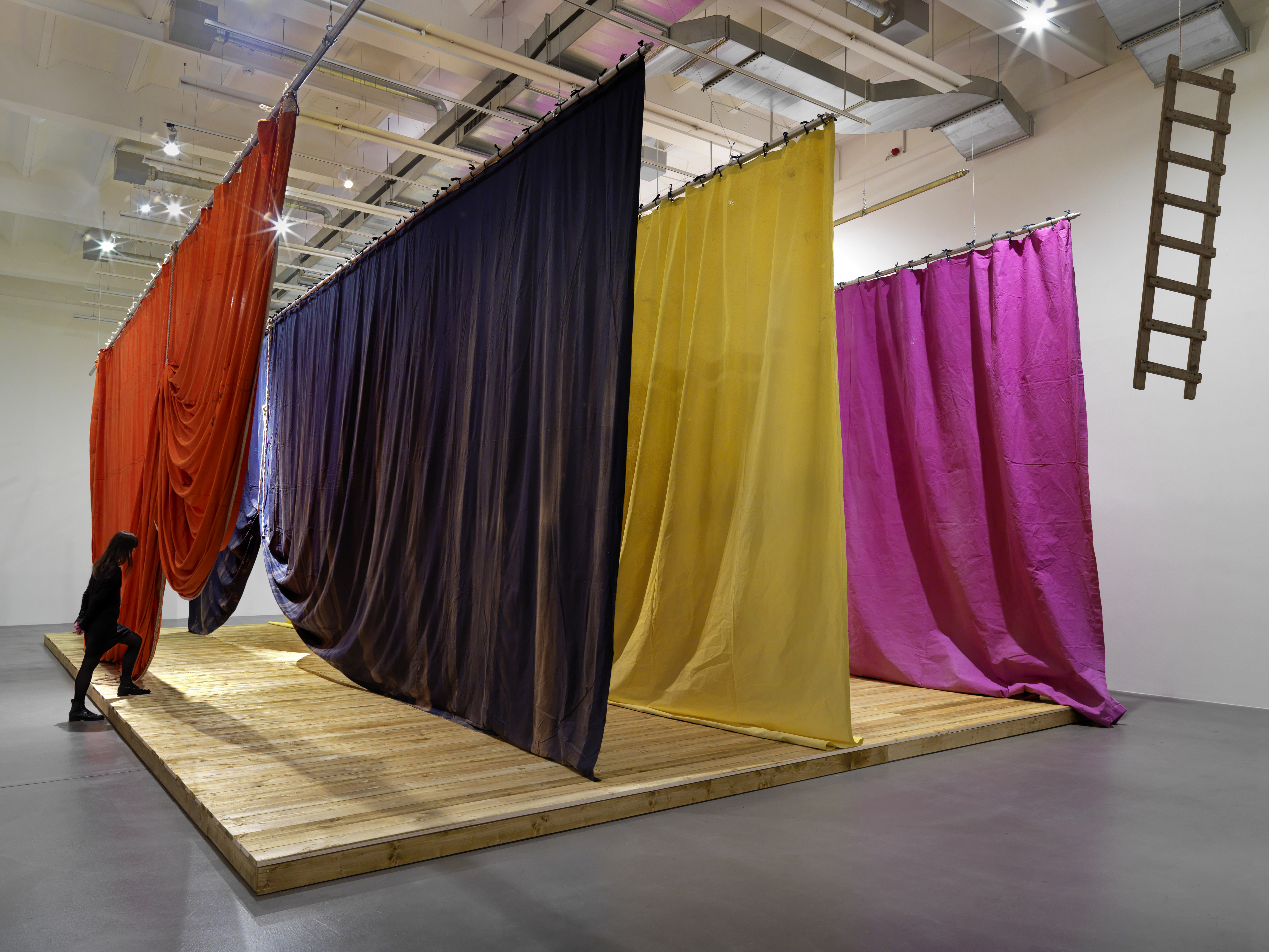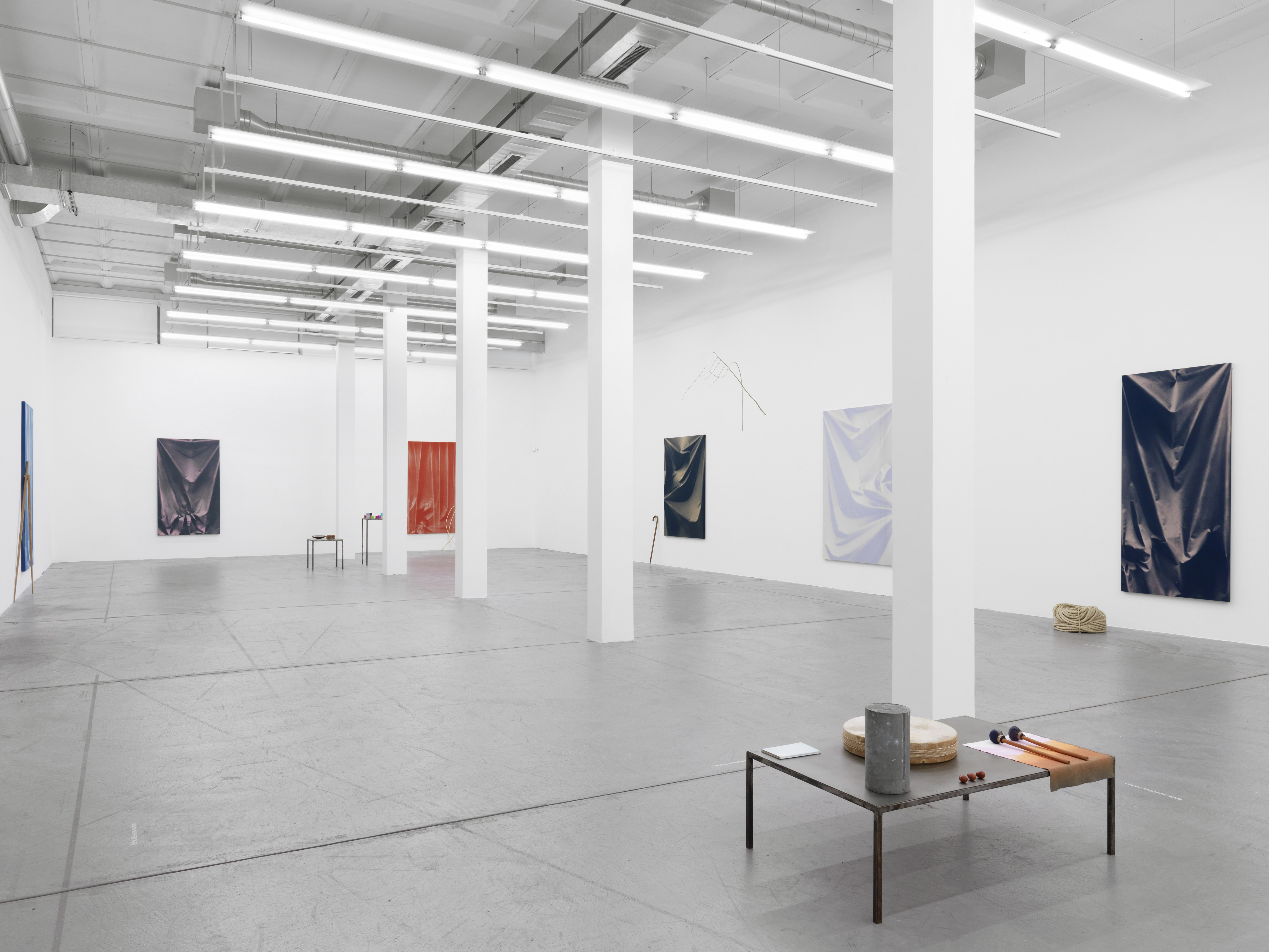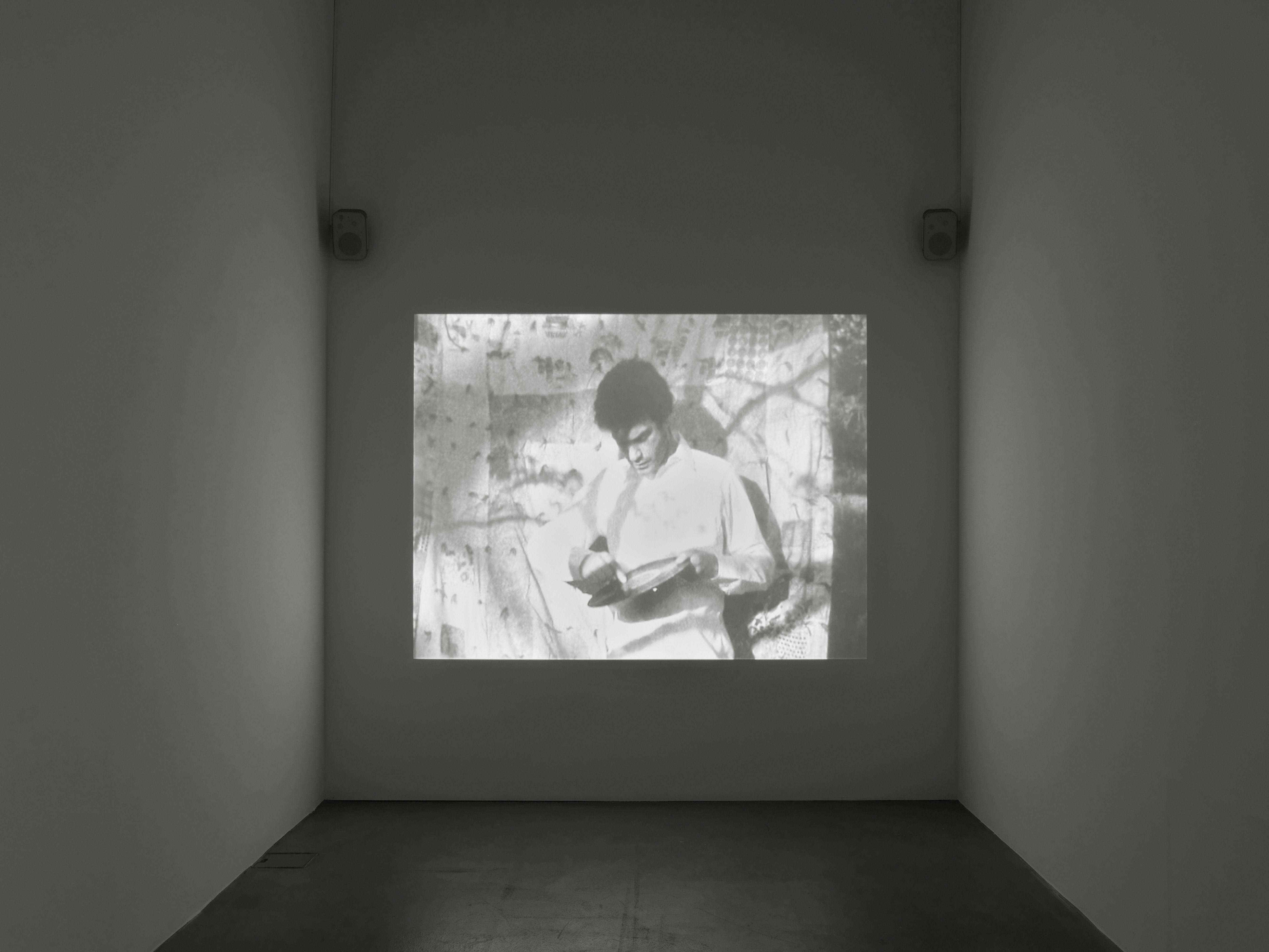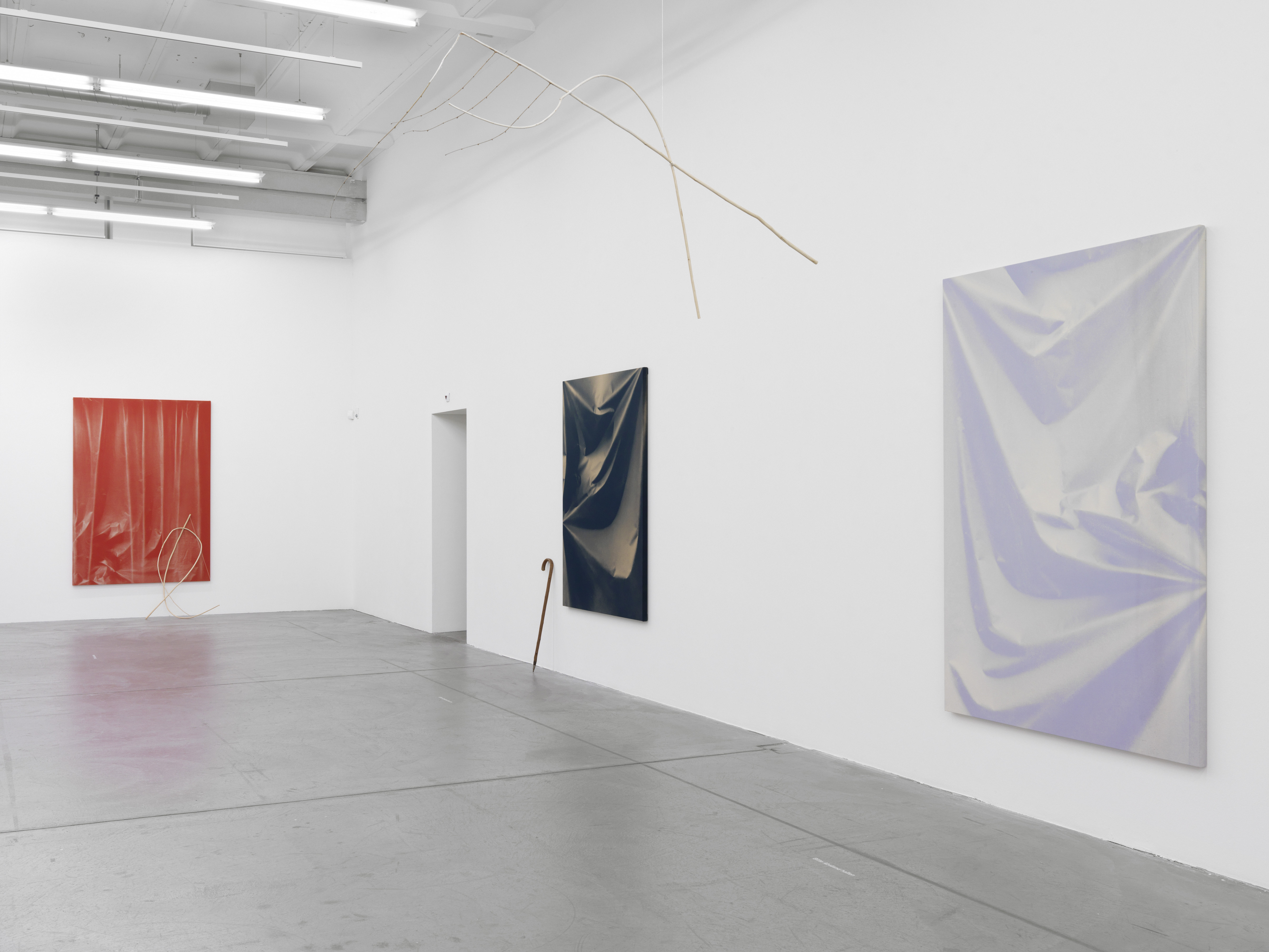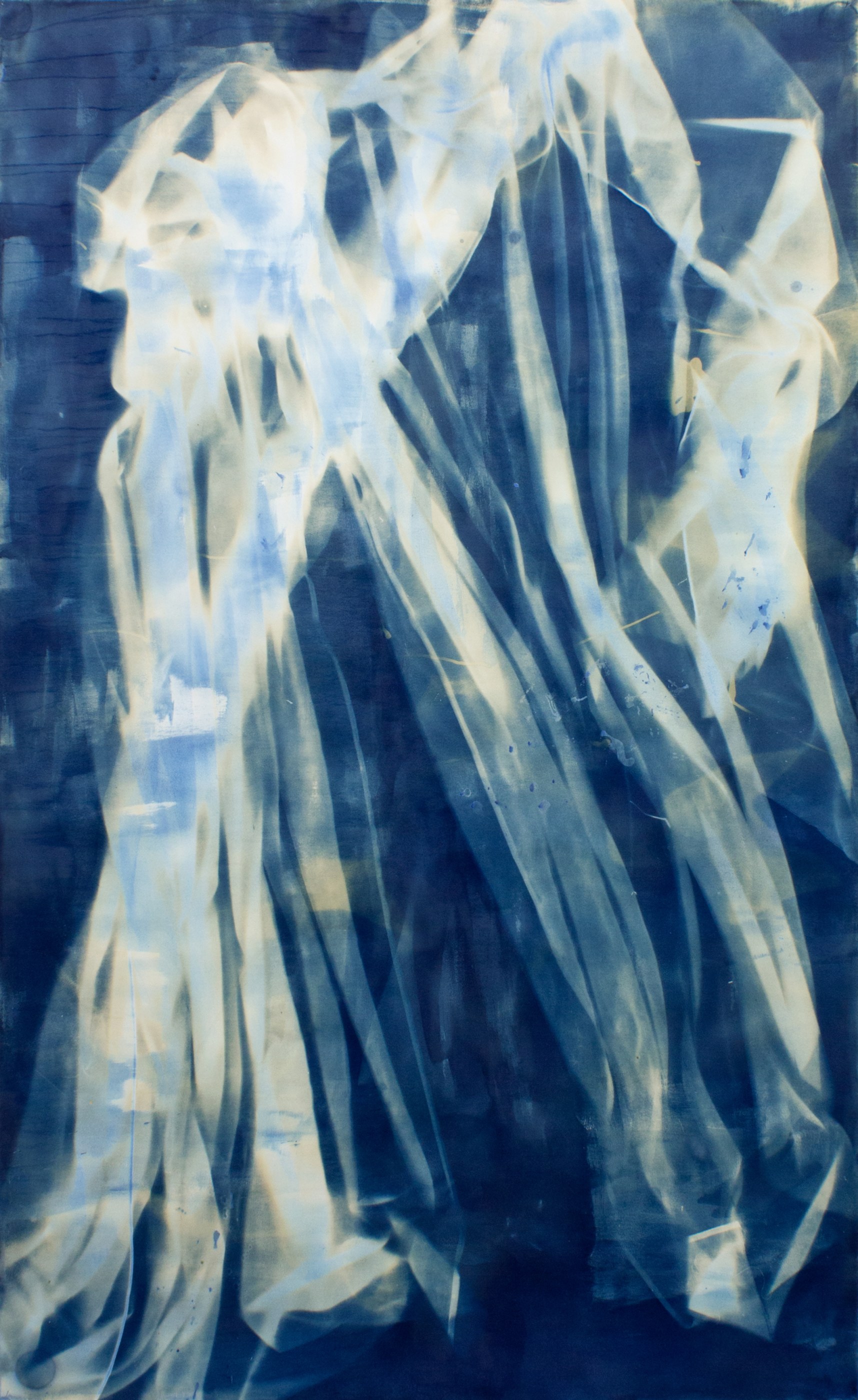Overview
Ulla von Brandenburg’s complex and luscious oeuvre includes specifically selected references to cultural history in a broad range of media. In her black-and-white films, installations, performances, murals, and drawings, she uses a vocabulary borrowed from theater. Her works interweave reality and fiction, the audience space and the stage space. Her works’ characteristic features include the use of shadows and mirrors (symbols of perception) and association-based, seemingly surreal texts, which are paired with paintings that are produced without any dependency on these texts, thus creating new contexts of meaning.
With the title “Manchmal Ja, manchmal Nein” (Sometimes Yes, Sometimes No), Ulla von Brandenburg refers to Anton Chekhov’s comedy “Platonov” (1880), in which the title character, a teacher, articulates the lack of principle in the society in which he himself feels trapped. Social criticism and the desire to alter life also provide the motive for many modern art movements. Ulla von Brandenburg establishes a link with Chekhov’s reduction of world affairs to the principles of rejection and acceptance – hence: “Sometimes Yes, Sometimes No”. The exhibition begins with an installation created for Museum Haus Konstruktiv from differently colored curtains. Like in theater, curtains over a wooden floor mark a transition between the real world and the stage, where play and fiction prevail and people become actors. Individual objects in the space can be read as props, and also as design elements in a space-filling painting, the shadows of which make it difficult to reliably differentiate between reality and pretense.
© Ulla von Brandenburg, installation view, Museum Haus Konstruktiv, 2016, Photo Stefan Altenburger

